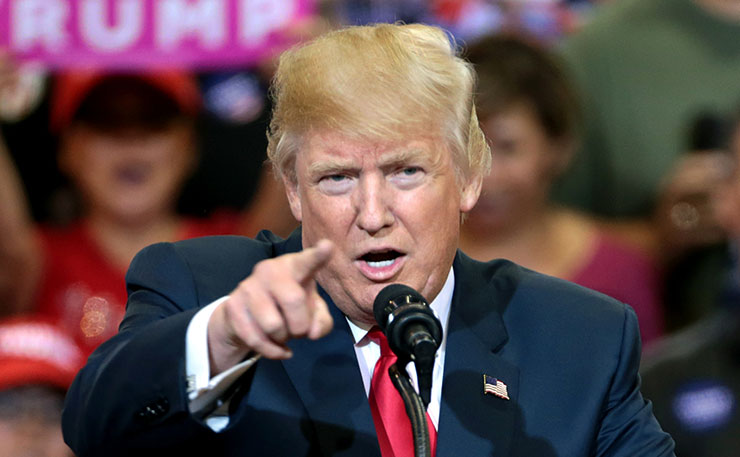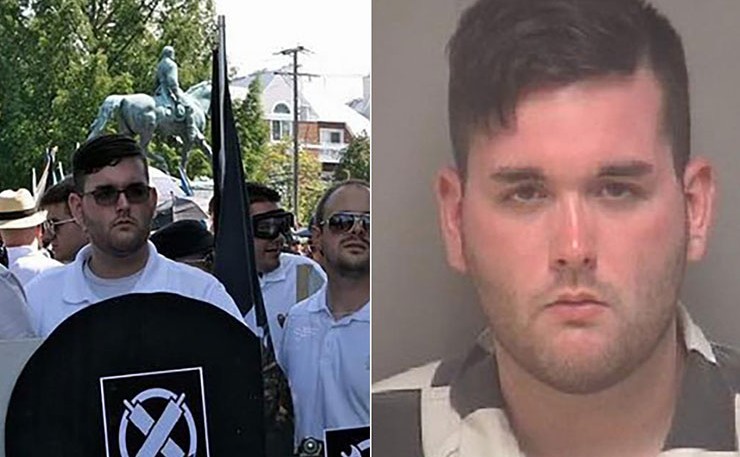To understand the violence unleashed in America over the weekend, you first need to understand the history of a nation long at war with itself. US-based Australian historian Gregory Smithers explains.
When a 20-year-old Ohio man killed a 32 year-old woman and injured 19 others after driving his car at high-speed into a crowded street in Charlottesville, Virginia over the weekend, Americans received yet another reminder of how racially inspired domestic terrorism remains the greatest threat to their democracy.
What sparked this act of racial violence and the open displays of bigotry that engulfed this usually quiet university town?
Much of the American media has portrayed the weekend’s violence as a result of the city of Charlottesville’s decision to remove Confederate statues from the downtown precinct.
To Australians who visit the American South, these statues probably look like most other bronze monuments to largely forgotten historical figures. But over the past few years an impassioned public debate about the future of these monuments has divided communities across the United States.
Understanding the passions that Confederate statues inspire in some Americans requires a quick history lesson. Between 1861 and 1865, the United States was plunged into a bitter Civil War. Southern states seceded from the American republic following Abraham Lincoln’s election to the presidency in November 1860. Over the next four years, Southern states fought the United States to both defend and perpetuate slavery.
The South, however, lost the war and over 4 million enslaved people eventually won their freedom. In the years following the war Southerners revised their rationale for seceding, insisting that it wasn’t slavery – an issue one Southern lawmaker described as the “cornerstone” of the Confederacy prior to the war – but a political principle: “states’ rights.” Thus was born the myth of the “Lost Cause” in which Southerners fought valiantly in defence of a political principle and a world governed by kindly slave masters and honourable Southern gentlemen.
Today, the defenders of Confederate statues work to perpetuate this historical fiction. They insist they’re not racist but simply trying to preserve the South’s heritage. “Heritage not hate” is their slogan, a glib attempt to defend the existence of public monuments erected during the late nineteenth and early twentieth centuries – an era of Jim Crow segregation and lynchings across America.
The removal of Confederate statues in Charlottesville was merely a spark that ignited a much deeper rage. Feeling increasingly under siege, white supremacists and right-wing extremists have left the anonymity of their online message boards, blogs, and steady diet of right-wing cable news. In the age of Trump, they’ve taken their newfound love of medieval history (and violence) and hit the streets fully armed.

The white men who menaced the Charlottesville community last weekend were driven by an irrational belief that a global conspiracy exists to commit “white genocide”. Threats to white masculinity are everywhere. White supremacists saw this threat materialize when Barack Obama rose to the presidency, but they also see it in immigration, “deep state” conspiracies, and globalization. In the age of Trump, white supremacists feel they’ve got an ally in the White House.
Trump’s reaction to the violence in Charlottesville solidified this view. The president’s insistence that “many sides” were to blame for recent outbursts of racial violence did more than create a false equivalence among recent protest movements, it emboldened white supremacists who saw in Trump’s language a coded message of his approval for their actions.
And well might white supremacists feel they have an ally in the White House. Trump’s rhetoric as a candidate, and now as president, paints a picture of an America under siege from migrants, “political correctness,” and a host of foreign and domestic advisories.
In Trump, white supremacists have a president who speaks their language. The former Ku Klux Klan leader David Duke celebrated Saturday’s gathering of white supremacists as a “turning point.”
“We are determined to take our country back,” Duke told reporters, “we are going to fulfil the promises of Donald Trump.”
Duke’s language reveals much about white supremacists in Trump’s America. As equality expanded to include previously disenfranchised groups in American society after the 1960s, so growing numbers of white men felt increasingly oppressed. These men feel that racial groups, immigrants, women, and LGBTI communities have taken from them. More than a few white men have not enjoyed having to share economic resources and political power over the past half century.
In Trump’s America, this resentment has given new life to conspiracy theories about a “global plot” by “cultural Marxists” to commit “white genocide”. In Charlottesville, this fear prompted white supremacists to unite in chants of “Jews will not replace us” and “you will not replace us”.
That this gathering of armed white supremacists occurred in a university town was no mistake. Academics are now routinely targeted for harassment if they critique right-wing politics or white supremacy, and universities are condemned as bastions of liberal indoctrination.
And it’s not just extremists who harbour such views. A recent poll by the Pew Research Center found that a majority of Americans who identify as Republican believe universities are bad for America.
This is Trump’s America. The president’s tone, his machismo swagger, and his anti-intellectualism emboldened the white supremacists who converged on Charlottesville last weekend.
Sadly, in Trump’s America, bigotry has been reborn.
Donate To New Matilda
New Matilda is a small, independent media outlet. We survive through reader contributions, and never losing a lawsuit. If you got something from this article, giving something back helps us to continue speaking truth to power. Every little bit counts.






